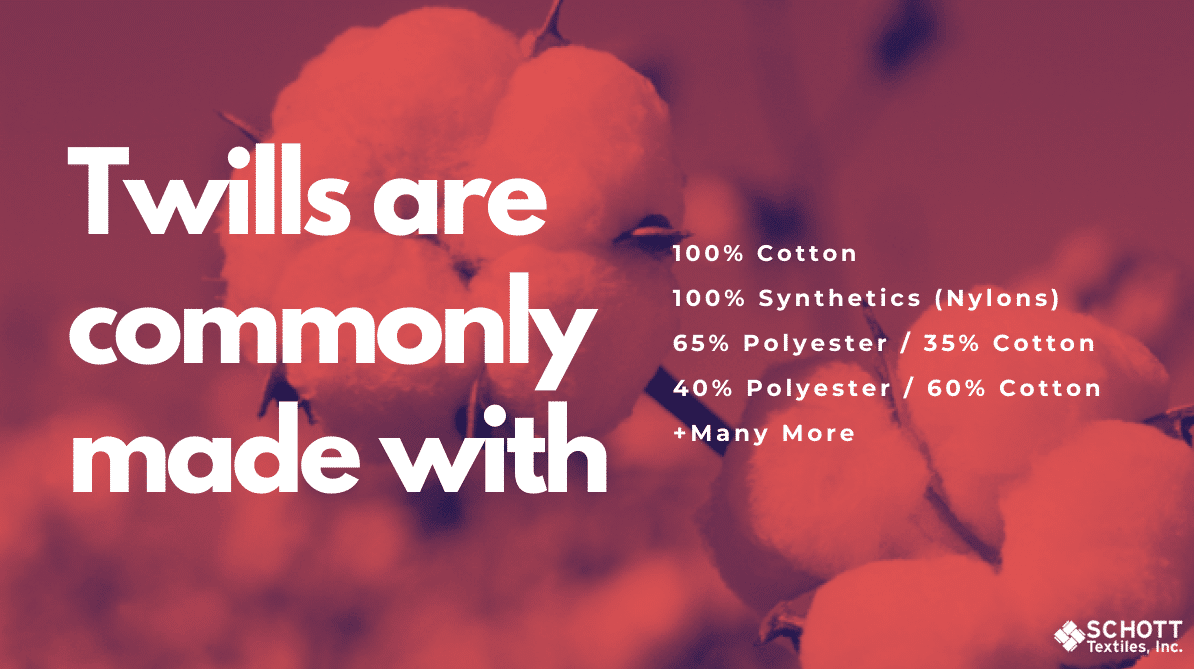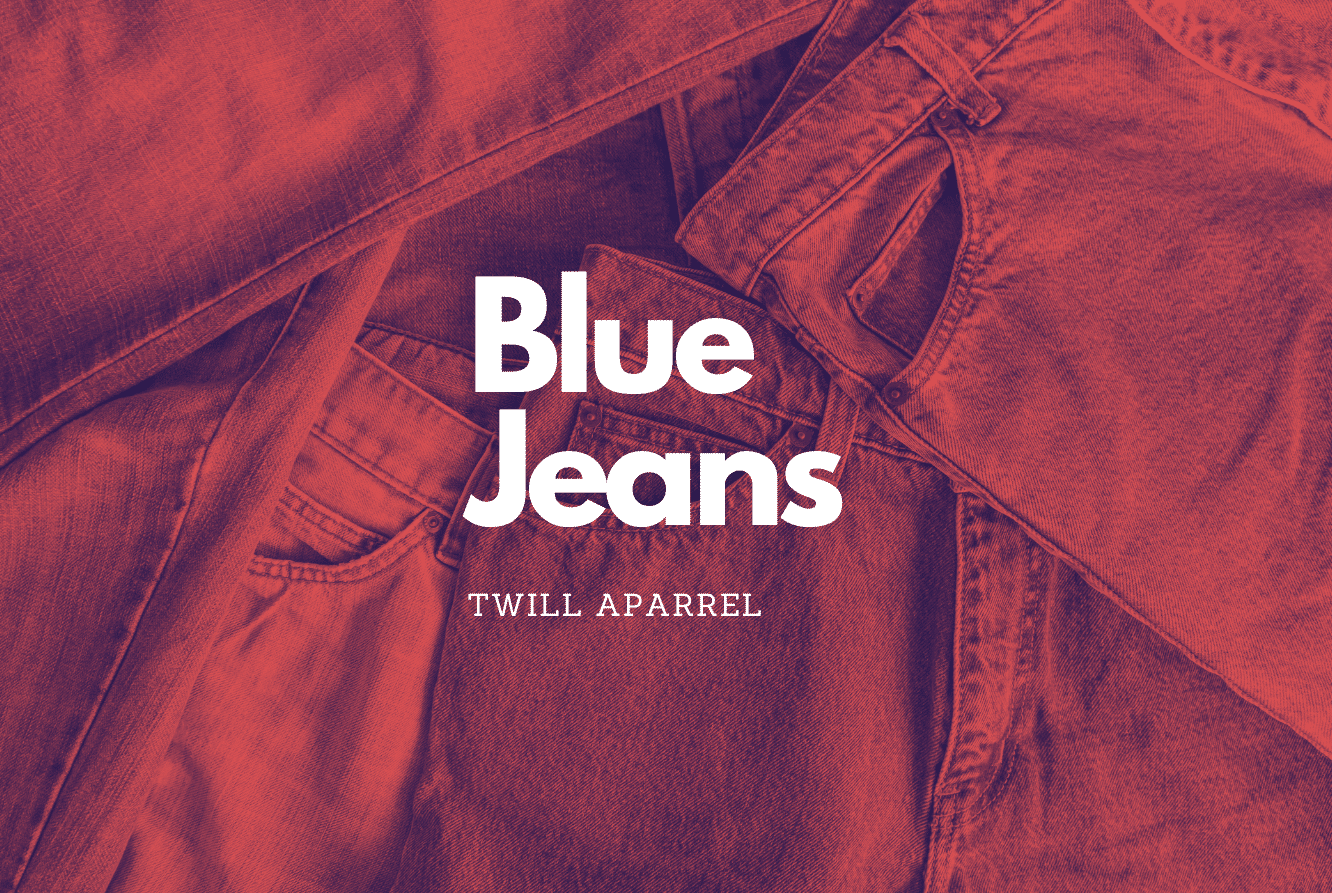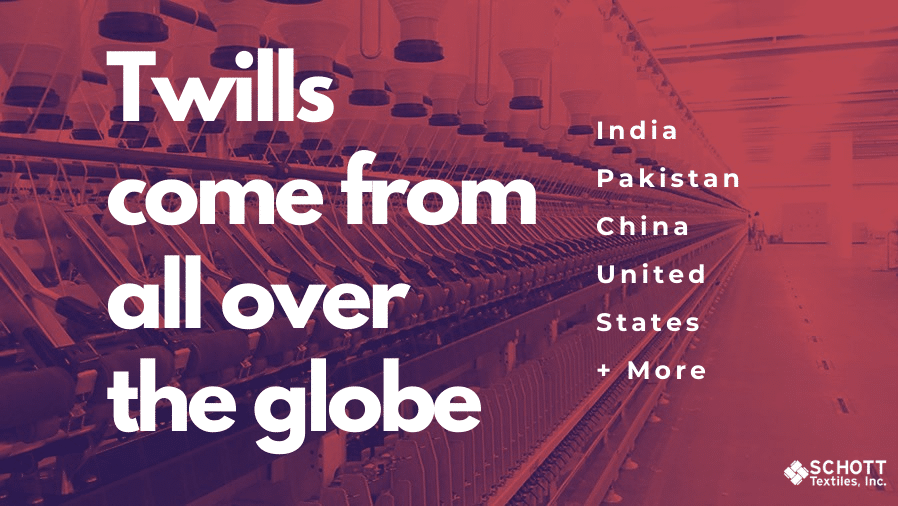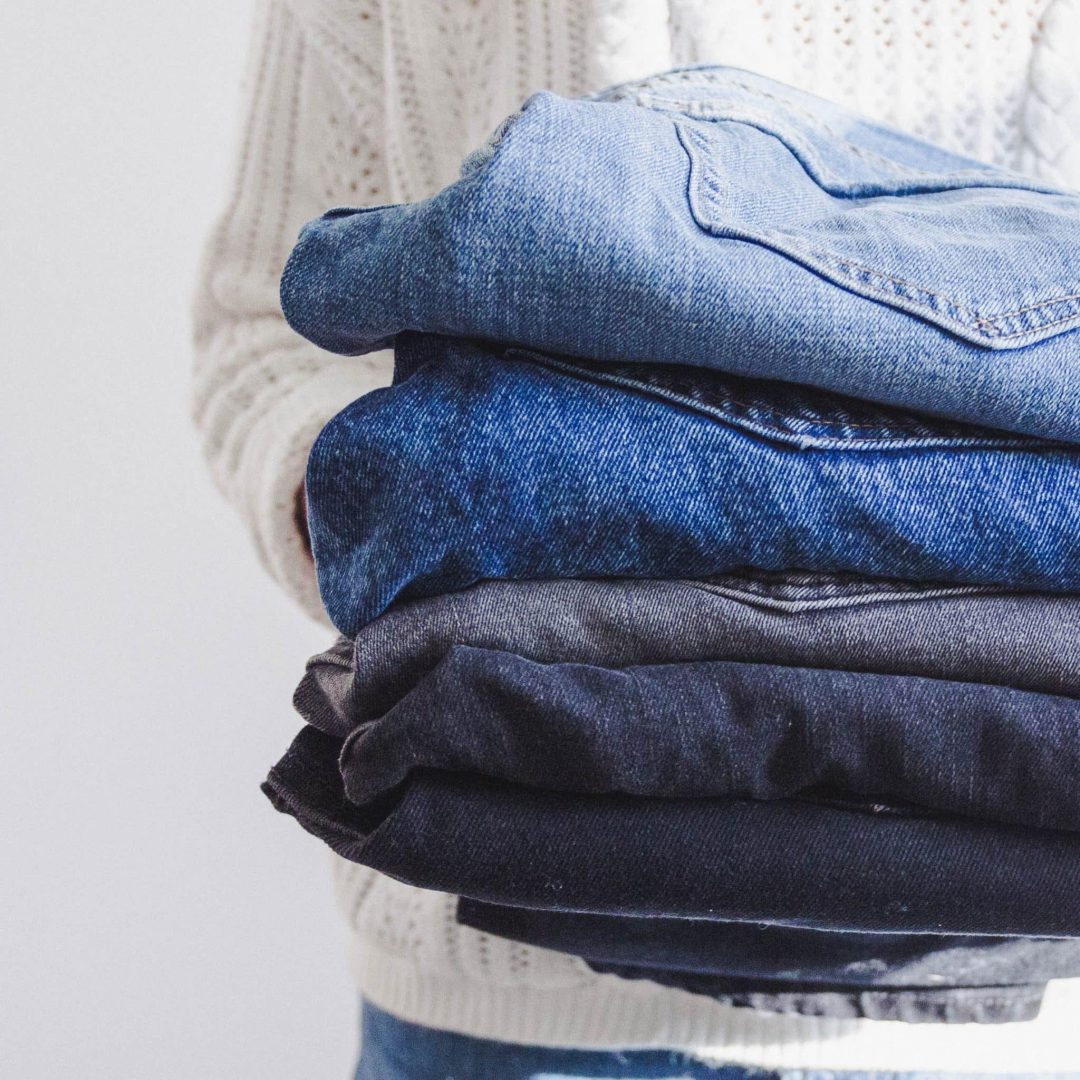What is Twill Fabric? | Definition, Characteristics and Uses
Twill is a broad term used to describe any two-sided fabric woven in a diagonal pattern, known as a “twill” pattern. The front side, called the face, displays a tight diagonal weave while the backside has a plain weave.
There are several different ways to weave fabric diagonally, all of which are still classified as Twill. As a rule of thumb, if a diagonal line can be seen in the weave, the fabric can be called Twill.

Characteristics of Twill Fabric
- Woven: Twill is a woven material consisting of yarns crossing over each other at right angles. It is a stable material This is in contrast to knits, which are composed of a single yarn continually looped & have stretch characteristics.
- Variable thread count: Twill usually has a thread count anywhere from 100-200 yarns per square inch.
- Width: Twills are usually sold in a 63”-72” width.
- Durable: The higher thread count means Twill Fabric is very durable and can handle a lot of wear in comparison to lighter fabrics.
- Medium weight: Due to its tight weave and high thread count, Twill is often medium to heavier weights ranging from 6.0 -12.5 oz sq yd. The specific yarn sizes will determine the final weight of the fabric. .
- Low stretch: With higher durability comes lower stretch. Unless made with elastic or spandex, Twill has little give.
- Opaque: Twill is not see through. It’s rarely printed on, but manufacturers will often weave together different colored threads to create a color or pattern effect. For example, denim is woven from blue and white threads while houndstooth uses black and white threads to create its distinct woven pattern.
How is Twill Fabric constructed?
To construct Twill Fabric, the weft (horizontal) thread is woven over a specific number of warp (vertical) threads, then under a specific number of warp threads. Each row is offset from the row above, resulting in Twill’s distinctive diagonal pattern.
The specific number of warp threads the weft thread is woven over, then under, creates slightly different diagonal patterns. The most commonly used pattern in Twill is a 3/1, which indicates that a weft went over three warp threads, then under one warp thread. 4/1 and 2/1 patterns are less common, but still used when creating Twill. The 4/1 pattern is referred to as a Sateen & the 2/1 pattern is a Drill construction. In a broad sense, these two patterns fall into the Twill family.
What is Twill Fabric made of?
Twill Fabrics can be made out of 100% cotton, a blend of polyester and cotton or 100% synthetics fibers like polyester, nylon or rayon. The most common constructions are 100% cotton and some type of poly cotton blend, like 65% polyester and 35% cotton or 60% cotton and 40% polyester.

The more polyester material, the more durable the twill is. Durability depends on the intended application of the material.
Twill fabrics can range anywhere from 6oz to 12.5 oz per square yard, with 6oz-8oz being the most common weights. Twills over 9.5oz are often called bull denim twills. Some Twills get up to 14 oz, but this heavy weight is unusual for this particular fabric.
What is Twill used to make?
Twill Fabrics can be used in a myriad of ways in apparel and around the home.

- Apparel: Many uniforms are made out of a poly/cotton blend, including chef’s clothing, glove cuffing and aprons. In consumer apparel, Twill fabrics are used to make jeans, jackets, shirting & pants. .
- Homeware: Twill Fabric is used to create bedding, curtains, tablecloths, pillows, upholstery, etc.
Why choose Twill Fabric?
There are several benefits to choosing a Twill Fabric for your application, including:
- Durability: Twill Fabric has good abrasion resistance, making it more durable than other fabrics. It can be used and washed repeatedly with limited wear and tear.
- Opacity: Twill is too dense to be sheer, making it a good choice for curtains and apparel. Its opacity and diagonal pattern, sometimes multicolored pattern also helps hide stains.
- Drape effect: Heavier weight gives Twill a lovely drape effect that stands out when used for curtains, clothing and tablecloths.
- Stays wrinkle-free: Material thickness prevents Twill from wrinkling easily.
- Reasonable price: The price of Twill depends on several factors, including the materials used and method of construction. While we can’t determine the exact average price, Twill is generally a bit more expensive than a plain weave but still fairly affordable in the grand scheme of the textile industry.
Where does Twill Fabric come from?
Twill Fabric can be woven in mills anywhere around the world. It is commonly produced in mills in both the U.S. and offshore. In our experience, most twills come from India, Pakistan, China and the U.S.

China is the world’s largest producer of polyester and cotton, so naturally it’s also the biggest producer of Twill. But the market is always shifting.
Get a quote for Twill Fabric
At Schott Textiles, we aim to educate our clients and assist them in choosing the right fabric for the job. We specialize in providing the finest customer service experience in the industry.

